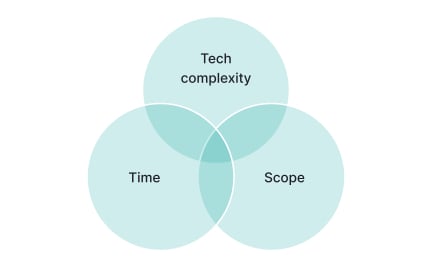Lead Product Manager
A lead product manager guides product strategy and delivery for a key area, often mentoring PMs and collaborating closely with leadership.
What is Lead Product Manager?
Your product team lacks technical leadership because senior individual contributors have no growth path beyond becoming people managers, leading to great PMs leaving for companies that value deep expertise alongside management tracks.
Most organizations force excellent PMs into management roles they don't want or watch them leave, missing the critical need for Lead Product Managers who provide technical leadership and mentorship while remaining hands-on with complex products.
A Lead Product Manager is a senior individual contributor who leads through expertise rather than authority, handling the most complex products while mentoring others, setting technical standards, and influencing product strategy without direct reports.
Organizations with strong Lead PM tracks retain top talent 65% better, deliver more innovative products, and build significantly stronger product cultures because expertise is valued equally with management rather than forcing artificial career choices.
Think about how Google's Lead PMs shape products affecting billions without managing people, or how successful startups rely on Lead PMs to handle critical products while founders scale the organization.
Why Lead Product Managers Matter for Product Excellence
Your best PMs face impossible career choices between staying hands-on with products they love or accepting management roles for career growth, leading to talent loss when forced into paths that don't match their strengths or interests.
The cost of missing Lead PM roles compounds through every talented IC who leaves or becomes unhappy manager. You lose product expertise, promote bad managers, miss innovation from senior ICs, and weaken product culture when expertise isn't valued alongside management.
What effective Lead PM roles deliver:
Better talent retention and satisfaction because excellent ICs have growth paths without forced management rather than career ceilings that drive them elsewhere.
When organizations create Lead PM roles, top talent stays rather than leaving for companies that value individual contribution alongside management.
Enhanced product innovation and quality through senior ICs who deeply understand products rather than managers split between people and product concerns.
Improved mentorship and skill development as Lead PMs teach through doing rather than theoretical management, building stronger product organizations.
Stronger technical decision-making because Lead PMs have time and expertise for complex product decisions rather than managers juggling multiple responsibilities.
More flexible organizational design with leadership through influence rather than hierarchy, enabling matrix organizations and cross-functional excellence.
Step 1: Develop Deep Product and Domain Expertise (Years 1-5)
Build unquestionable expertise in your product area and industry rather than broad shallow knowledge, becoming go-to person for complex decisions.
This creates Lead PM foundation based on genuine expertise rather than tenure alone without distinctive knowledge or capability.
Step 2: Master Technical Leadership Without Authority (Year 5-7)
Learn to influence through expertise and relationships rather than position power, building followership through value rather than reporting lines.
Focus leadership on empowering others rather than controlling, multiplying impact through enabling rather than directing.
Step 3: Build Mentorship and Coaching Skills (Year 6-8)
Develop ability to grow other PMs through example and guidance rather than formal training, sharing expertise in ways that stick.
Balance mentorship with individual contribution to avoid becoming full-time coach rather than practitioner who teaches through doing.
Step 4: Shape Product Strategy and Standards (Year 7-10)
Influence organizational product direction and practices rather than just individual products, scaling impact beyond direct work.
Step 5: Navigate Organizational Dynamics as Senior IC (Ongoing)
Manage visibility and influence without formal authority rather than becoming invisible senior IC, ensuring contributions are recognized and valued.
This ensures Lead PM role creates organizational value rather than just personal satisfaction without broader impact.
If Lead PM role doesn't enhance products, examine whether expertise translates to leadership rather than just senior individual work.
Recommended resources
Courses

HTML Foundations

Enhancing UX Workflow with AI







